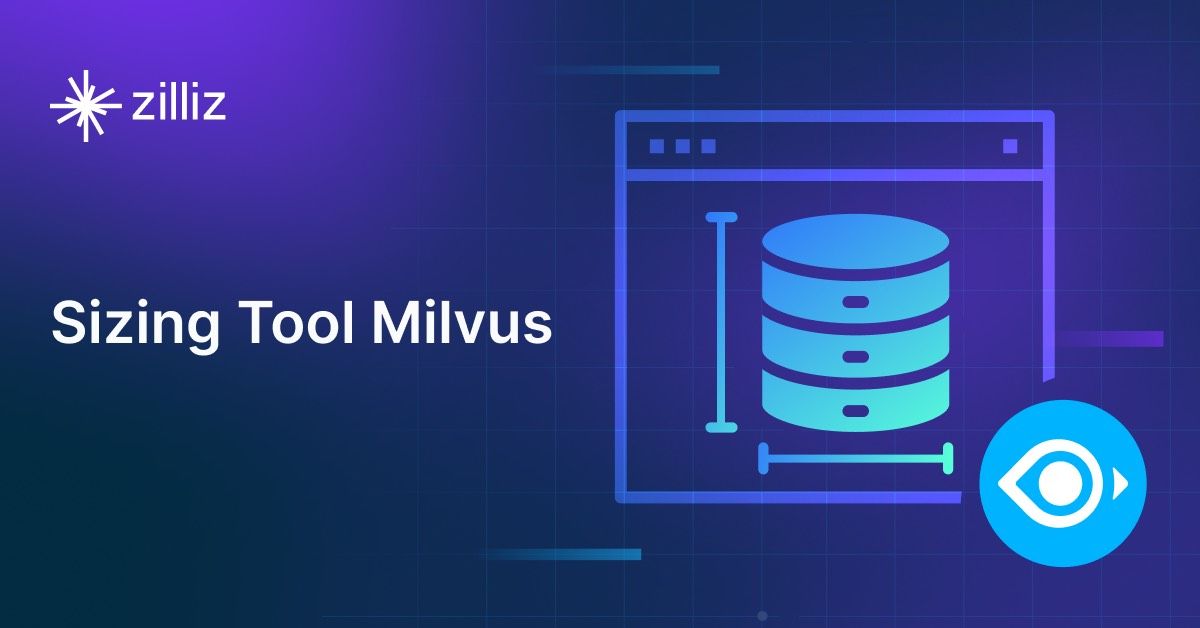Apache Cassandra vs Qdrant: Choosing the Right Vector Database for Your Needs

Apache Cassandra vs. Qdrant: Choosing the Right Vector Database for Your AI Applications
As AI-driven applications become more prevalent, developers and engineers face the challenge of selecting the right database to handle vector data efficiently. Two popular options in this space are Apache Cassandra and Qdrant. This article compares these technologies to help you make an informed decision for your vector database needs.
What is a Vector Database?
Before we compare Apache Cassandra and Qdrant, let's first explore the concept of vector databases.
A vector database is specifically designed to store and query high-dimensional vectors, which are numerical representations of unstructured data. These vectors encode complex information, such as text's semantic meaning, images' visual features, or product attributes. By enabling efficient similarity searches, vector databases play a pivotal role in AI applications, allowing for more advanced data analysis and retrieval.
Vector databases are adopted in many use cases, including e-commerce product recommendations, content discovery platforms, anomaly detection in cybersecurity, medical image analysis, and natural language processing (NLP) tasks. They also play a crucial role in Retrieval Augmented Generation (RAG), a technique that enhances the performance of large language models (LLMs) by providing external knowledge to reduce issues like AI hallucinations.
There are many types of vector databases available in the market, including:
Purpose-built vector databases such as Milvus, Zilliz Cloud (fully managed Milvus)
Lightweight vector databases such as Chroma and Milvus Lite.
Traditional databases with vector search add-ons capable of performing small-scale vector searches.
Cassandra and Qdrant represent different approaches to vector databases. Cassandra is a traditional database that has evolved to include vector search capabilities and Qdrant, on the other hand, is a purpose-built vector database. It was designed from the ground up to handle vector data and perform similarity searches efficiently. As a specialized solution, Qdrant focuses exclusively on vector operations and is optimized for tasks like similarity search and recommendations.
##Apache Cassandra: Overview and Core Technology
Apache Cassandra is an open-source, distributed NoSQL database known for its scalability and availability. Cassandra's features include a masterless architecture for availability, scalability, tunable consistency, and a flexible data model. With the release of Cassandra 5.0, it now supports vector embeddings and vector similarity search through its Storage-Attached Indexes (SAI) feature. While this integration allows Cassandra to handle vector data, it's important to note that vector search is implemented as an extension of Cassandra's existing architecture rather than a native feature.
Cassandra's vector search functionality is built on its existing architecture. It allows users to store vector embeddings alongside other data and perform similarity searches. This integration enables Cassandra to support AI-driven applications while maintaining its strengths in handling large-scale, distributed data.
A key component of Cassandra's vector search is the use of Storage-Attached Indexes (SAI). SAI is a highly-scalable and globally-distributed index that adds column-level indexes to any vector data type column. It provides high I/O throughput for databases to use Vector Search as well as other search indexing. SAI offers extensive indexing functionality, capable of indexing both queries and content (including large inputs like documents, words, and images) to capture semantics.
Vector Search is the first instance of validating the extensibility of SAI, leveraging its new modularity. This combination of Vector Search and SAI enhances Cassandra's capabilities in handling AI and machine learning workloads, making it a strong contender in the vector database space.
Qdrant: Overview and Core Technology
Qdrant is a vector database built specifically for similarity search and machine learning applications. It's designed from the ground up to handle vector data efficiently, making it a top choice for developers working on AI-driven projects. Qdrant excels in performance optimization and can work with high-dimensional vector data, which is crucial for many modern machine learning models.
One of Qdrant's key strengths is its flexible data modeling. It allows you to store and index not just vectors, but also payload data associated with each vector. This means you can run complex queries that combine vector similarity with filtering based on metadata, enabling more powerful and nuanced search capabilities. Qdrant ensures data consistency with ACID-compliant transactions, even during concurrent operations.
Qdrant's vector search capabilities are a core part of its architecture. It uses a custom version of the HNSW (Hierarchical Navigable Small World) algorithm for indexing, known for its efficiency in high-dimensional spaces. This allows for fast approximate nearest neighbor search, which is essential for many AI applications. For scenarios where precision trumps speed, Qdrant also supports exact search methods.
What sets Qdrant apart is its query language and API design. It offers a rich set of filtering and query options that work seamlessly with vector search, allowing for complex, multi-stage queries. This makes it particularly good for applications that need to perform semantic search alongside traditional filtering. Qdrant also includes features like automatic sharding and replication to help you scale as your data and query load grow. It supports a variety of data types and query conditions, including string matching, numerical ranges, and geo-locations. Qdrant's scalar, product, and binary quantization features can significantly reduce memory usage and boost search performance, especially for high-dimensional vectors
Key Differences
Search Methodology
Both Cassandra and Qdrant use the HNSW algorithm for vector search, but their implementations differ. Cassandra integrates vector search through its Storage-Attached Indexes (SAI), extending its existing architecture. Qdrant, built specifically for vector search, uses a custom version of HNSW as a core part of its architecture, optimized for high-dimensional spaces. Qdrant also offers exact search methods for precision-critical scenarios.
Data Handling
Cassandra excels in managing large-scale structured and semi-structured data, allowing vector embeddings to be stored alongside other data types. Qdrant focuses on efficient vector data handling, but also supports payload data associated with vectors, enabling complex queries that combine vector similarity with metadata filtering.
Scalability and Performance
Cassandra's masterless architecture allows for linear scalability across distributed systems. Qdrant offers automatic sharding and replication for scaling, with additional performance optimizations like scalar, product, and binary quantization for high-dimensional vectors.
Flexibility and Customization
Cassandra provides flexibility through its SAI feature, allowing customization within its existing query language. Qdrant offers a rich query language and API design specifically tailored for vector operations and complex, multi-stage queries combining vector search with traditional filtering.
Integration and Ecosystem
Cassandra integrates well with big data ecosystems and has a mature ecosystem of tools. Qdrant, being more specialized, focuses on integrations relevant to AI and machine learning workflows.
Ease of Use
Cassandra has a steeper learning curve due to its distributed nature and complexity. Qdrant, designed specifically for vector search, may be easier to set up and use for vector-specific applications.
Cost Considerations
Cassandra may have higher operational costs for large-scale deployments due to its distributed architecture. Qdrant's cost would depend on the scale of vector data and query load, with potential savings from its efficiency optimizations.
Security Features
Cassandra offers robust security features for distributed environments. Qdrant provides ACID-compliant transactions and supports various security measures, though specific details would need to be compared directly.
When to Choose Qdrant or Apache Cassandra
Apache Cassandra: Choose Cassandra when dealing with large-scale distributed data that requires vector search capabilities alongside other data types. It's particularly suitable for scenarios involving massive datasets that exceed the capacity of a single server or small cluster. Cassandra is ideal for applications requiring high write throughput, strong consistency, and fault tolerance across multiple data centers. It's a good fit for projects that need to store and query vector data as part of a larger, diverse dataset. Cassandra's strengths in handling structured and semi-structured data make it suitable for complex, data-intensive applications that require vector search as an additional feature rather than the primary focus.
Qdrant: Opt for Qdrant when your primary focus is on vector similarity search and machine learning applications. It's the better choice for projects that require efficient handling of high-dimensional vector data and need to perform complex queries combining vector similarity with metadata filtering. Qdrant is particularly suitable for AI-driven applications that need fast approximate nearest neighbor search, as well as scenarios where precision is critical and exact search methods are required. Choose Qdrant when you need a rich query language specifically designed for vector operations, or when your application benefits from features like automatic sharding and replication for scaling vector search capabilities. It's also preferable when you need advanced performance optimizations for vector search, such as scalar, product, and binary quantization for high-dimensional vectors.
Conclusion
In conclusion, both Apache Cassandra and Qdrant offer powerful vector search capabilities, but they cater to different use cases and requirements. Cassandra excels in handling large-scale distributed data, providing robust scalability and strong consistency across multiple data centers. It's an excellent choice for applications that need to incorporate vector search into a broader data management strategy, especially when dealing with diverse data types and large volumes of information.
Qdrant, on the other hand, shines in situations focused primarily on vector similarity search and machine learning applications. Its specialized design for efficient vector data handling, combined with a rich query language and performance optimizations, makes it ideal for AI-driven projects that require complex vector operations. The choice between these technologies ultimately depends on your specific use case, the scale of your vector data operations, and how they fit into your overall data architecture.
While this article provides an overview of Cassandra and Qdrant, it's crucial to evaluate these databases based on your specific use case. One tool that can assist in this process is VectorDBBench, an open-source benchmarking tool designed for comparing vector database performance. Ultimately, thorough benchmarking with specific datasets and query patterns will be essential in making an informed decision between these two powerful, yet distinct, approaches to vector search in distributed database systems.
VectorDBBench is an open-source benchmarking tool designed for users who require high-performance data storage and retrieval systems, particularly vector databases. This tool allows users to test and compare the performance of different vector database systems such as Milvus and Zilliz Cloud (the managed Milvus) using their own datasets and determine the most suitable one for their use cases. Using VectorDBBench, users can make informed decisions based on the actual vector database performance rather than relying on marketing claims or anecdotal evidence.
VectorDBBench is written in Python and licensed under the MIT open-source license, meaning anyone can freely use, modify, and distribute it. The tool is actively maintained by a community of developers committed to improving its features and performance.
Download VectorDBBench from its GitHub repository to reproduce our benchmark results or obtain performance results on your own datasets.
Take a quick look at the performance of mainstream vector databases on the VectorDBBench Leaderboard.
Read the following blogs to learn more about vector database evaluation.
Further Resources about VectorDB, GenAI, and ML
- What is a Vector Database?
- Qdrant: Overview and Core Technology
- Key Differences
- When to Choose Qdrant or Apache Cassandra
- Conclusion
- Further Resources about VectorDB, GenAI, and ML
Content
Start Free, Scale Easily
Try the fully-managed vector database built for your GenAI applications.
Try Zilliz Cloud for FreeKeep Reading

Zilliz Cloud Launches in AWS Australia, Expanding Global Reach to Australia and Neighboring Markets
We're thrilled to announce that Zilliz Cloud is now available in the AWS Sydney, Australia region (ap-southeast-2).

Demystifying the Milvus Sizing Tool
Explore how to use the Sizing Tool to select the optimal configuration for your Milvus deployment.

Vector Databases vs. Hierarchical Databases
Use a vector database for AI-powered similarity search; use a hierarchical database for organizing data in parent-child relationships with efficient top-down access patterns.
The Definitive Guide to Choosing a Vector Database
Overwhelmed by all the options? Learn key features to look for & how to evaluate with your own data. Choose with confidence.